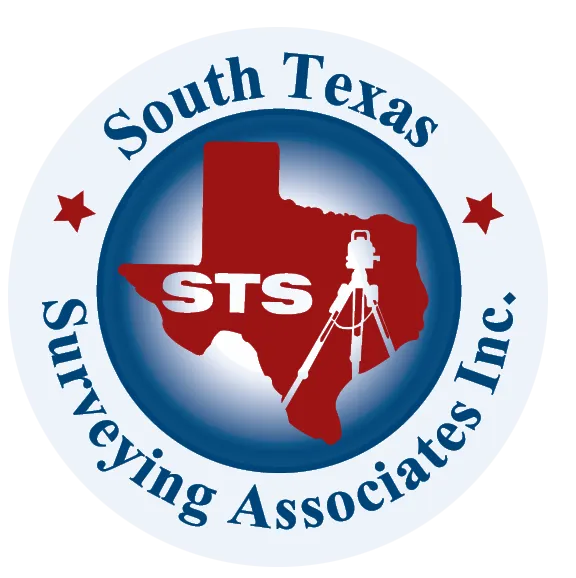Surveying Texas Since 1980 Family Owned, Customer Devoted | Firm #10045400 | 281-556-6918
See Our Latest Blogs

Subsurface Utility Mapping for San Antonio's Commercial Projects
"Texas, often referred to as the Lone Star State, is a thriving hub for economic growth and innovation, making it an attractive destination for commercial real estate investment." - Chris Evans
Subsurface Utility Mapping for San Antonio's Commercial Projects
In the booming commercial real estate market of San Antonio, the success of a development project depends not only on surface-level factors like zoning and design but also on what lies beneath the ground—subsurface utilities. These include essential infrastructure such as water lines, gas pipes, sewer systems, and electrical conduits that are buried beneath the property. For developers, contractors, and engineers, accurately identifying and mapping these underground utilities is crucial to avoid costly delays, damage, or even safety hazards during construction. Subsurface utility mapping has become an indispensable tool in San Antonio's commercial projects, helping to ensure smooth operations and compliance with local regulations. In this article, we'll explore how subsurface utility mapping works and the significant benefits it brings to commercial developments in San Antonio.
What is Subsurface Utility Mapping?
Subsurface utility mapping (SUM) involves using advanced technologies and methods to detect, map, and document underground utilities. The process is essential for identifying the exact location of critical infrastructure beneath the ground. With utility mapping, developers can create a precise representation of the underground network of pipes, cables, and conduits running beneath a site. This is particularly important for San Antonio’s commercial real estate market, where utility systems are often complex and spread out over large urban and suburban areas.
Why Subsurface Utility Mapping is Essential for Commercial Projects in San Antonio
San Antonio’s urban development continues to grow rapidly, creating the need for more efficient infrastructure solutions. Here’s why subsurface utility mapping is vital for the success of commercial projects in the area:
1. Avoiding Costly Utility Damage
One of the most immediate risks in any construction project is the accidental damage of underground utilities. Striking a gas line, water main, or electrical conduit can result in costly repairs, project delays, and safety hazards. Subsurface utility mapping provides a detailed and accurate picture of the underground environment, helping developers avoid these dangerous and expensive mistakes.
In San Antonio, where commercial development often intersects with older infrastructure systems, there is an increased risk of hitting undocumented or outdated utility lines. SUM ensures that all utilities are accounted for before construction begins, reducing the risk of costly accidents.
2. Enhancing Safety and Reducing Risks
Safety is a top priority on any construction site. Without an accurate map of underground utilities, workers and contractors are at greater risk of accidental utility strikes, which can lead to serious injuries or even fatalities. Subsurface utility mapping enhances on-site safety by clearly marking the location of utilities, allowing teams to take precautions during excavation or construction activities.
With San Antonio’s fast-paced commercial development and busy urban infrastructure, preventing safety incidents is critical for both developers and the community. SUM helps reduce the likelihood of utility strikes, protecting both workers and nearby residents from potential hazards.
3. Ensuring Regulatory Compliance
In San Antonio, construction and real estate development are subject to local, state, and federal regulations, including those related to underground utility management. Failing to identify and protect existing utilities during construction can result in compliance violations and fines. Subsurface utility mapping helps developers adhere to these regulations by providing a comprehensive overview of the site’s underground infrastructure, ensuring that no utilities are damaged or disturbed during construction.
For example, Texas law mandates the identification and marking of underground utilities before digging, known as 811 locates. However, utility locates alone may not provide a complete picture of subsurface conditions. Subsurface utility mapping goes beyond basic locates, offering a more detailed and accurate analysis that supports long-term compliance and project success.
The Benefits of Subsurface Utility Mapping for San Antonio’s Commercial Developments
Subsurface utility mapping offers numerous benefits that enhance the efficiency, safety, and success of commercial projects. Here’s how SUM can make a difference for developers and contractors in San Antonio:
1. Improved Project Planning and Design
Understanding the location of underground utilities is crucial for effective project planning and design. Subsurface utility mapping provides the data needed to design construction projects that work around existing utilities, ensuring that structures are placed in the most optimal locations. Whether you’re developing a high-rise office building, a retail center, or an industrial facility, SUM helps avoid conflicts with underground utilities and ensures that construction can proceed without interruptions.
For instance, if utility lines are located in an area where a new foundation is planned, the project design can be adjusted early on, avoiding costly rework or delays. This proactive approach to design helps developers in San Antonio save both time and money.
2. Streamlined Construction Processes
Utility strikes or unexpected discoveries during excavation can bring construction to a halt, causing significant delays. Subsurface utility mapping streamlines the construction process by providing a clear and accurate view of all utilities before the first shovel hits the ground. This ensures that crews can work with confidence, knowing exactly where to avoid digging.
In fast-developing commercial areas of San Antonio, where multiple projects may be occurring simultaneously, avoiding delays is crucial for meeting deadlines and staying within budget. Subsurface utility mapping keeps construction timelines on track by preventing unexpected utility-related disruptions.
3. Protecting the Environment
Commercial developments in San Antonio must often comply with environmental regulations aimed at protecting the local ecosystem. Accidental damage to underground utilities, such as sewer lines or gas pipes, can lead to environmental contamination, which can harm the surrounding area and result in hefty fines. Subsurface utility mapping helps developers prevent such accidents, ensuring that utilities are properly managed and protected throughout the construction process.
By avoiding utility strikes, developers can also reduce the likelihood of environmental damage, such as soil contamination or water supply disruptions, which can have long-lasting impacts on the local community and ecosystem.
Technologies Used in Subsurface Utility Mapping
Subsurface utility mapping uses a range of advanced technologies to detect and document underground utilities accurately. Here are some of the most common tools used in SUM for San Antonio’s commercial projects:
1. Ground Penetrating Radar (GPR)
Ground Penetrating Radar (GPR) is one of the most widely used technologies for subsurface utility mapping. GPR uses radar pulses to detect and map underground utilities, providing real-time data about the location, depth, and type of buried infrastructure. It’s especially useful for detecting non-metallic utilities, such as PVC pipes or fiber-optic cables, which may not be picked up by traditional metal detectors.
2. Electromagnetic Induction
Electromagnetic induction is used to detect buried metallic utilities, such as gas lines, electrical conduits, and water pipes. This technology works by creating an electromagnetic field around the utility, allowing surveyors to pinpoint its location accurately. Electromagnetic induction is often used in conjunction with GPR to provide a complete picture of the underground utility network.
3. Utility Locators
Utility locators are commonly used in the early stages of subsurface utility mapping to mark the general location of underground utilities. While utility locates provide an initial overview, they are typically less precise than other methods. For detailed mapping, more advanced technologies like GPR and electromagnetic induction are used to supplement the locate data.
4. 3D Laser Scanning
In some cases, 3D laser scanning is used to create a detailed, three-dimensional model of the site’s surface and subsurface features. This technology helps developers visualize the relationship between underground utilities and surface structures, allowing for more informed decision-making during the planning and construction phases.
How South Texas Surveying Supports Subsurface Utility Mapping in San Antonio
At South Texas Surveying, we specialize in providing accurate and detailed subsurface utility mapping services for commercial developments in San Antonio. Our team uses state-of-the-art technologies, including GPR and electromagnetic induction, to map underground utilities and ensure that your project proceeds safely and efficiently.
Here’s how we help our clients:
1. Comprehensive Utility Mapping
Our subsurface utility mapping services provide a comprehensive view of all underground utilities on your project site. We work closely with developers, contractors, and engineers to ensure that no utility is overlooked, helping you avoid costly surprises during construction.
2. Risk Mitigation
We understand the risks involved in large-scale commercial projects, particularly when it comes to underground utilities. Our utility mapping services help mitigate these risks by providing accurate data that supports safe and compliant construction practices.
3. Regulatory Compliance
Our team ensures that your project complies with San Antonio’s local regulations regarding underground utilities. By providing detailed mapping and documentation, we help you meet legal requirements and avoid potential fines or delays.
Frequently Asked Questions (FAQs)
What is subsurface utility mapping?
Subsurface utility mapping is the process of detecting, mapping, and documenting underground utilities using advanced technologies like Ground Penetrating Radar (GPR) and electromagnetic induction.
Why is subsurface utility mapping important for commercial projects?
Subsurface utility mapping helps developers avoid utility strikes, enhance on-site safety, ensure compliance with local regulations, and streamline the construction process.
What technologies are used for subsurface utility mapping?
Common technologies include Ground Penetrating Radar (GPR), electromagnetic induction, utility locators, and 3D laser scanning.
How does subsurface utility mapping improve safety?
By identifying the exact location of underground utilities, subsurface utility mapping helps prevent accidental utility strikes, reducing the risk of injury and damage to critical infrastructure.
Do I need subsurface utility mapping for my San Antonio commercial project?
Yes, subsurface utility mapping is essential for any commercial project that involves excavation or construction near underground utilities. It helps prevent costly delays, safety hazards, and compliance issues.
What are the environmental benefits of subsurface utility mapping?
By preventing utility strikes and minimizing the risk of environmental contamination, subsurface utility mapping helps protect the local ecosystem and ensures compliance with environmental regulations.
Conclusion: The Importance of Subsurface Utility Mapping for San Antonio’s Commercial Projects
Subsurface utility mapping is a critical component of successful commercial developments in San Antonio. By providing detailed information about underground utilities, this process helps developers avoid costly utility strikes, enhance safety, and ensure regulatory compliance. At South Texas Surveying, we specialize in delivering accurate subsurface utility mapping services that support the efficient, safe, and successful completion of commercial projects. Contact us today to learn more about how we can help you navigate the complexities of San Antonio’s underground infrastructure.
Delivering Land Surveys with Attention to Detail
George Owens
Commercial Broker

I have worked with many surveying companies, but South Texas Surveying stands out for their exceptional professionalism, attention to detail, and commitment to their clients.
Kim Wexler
Project Manager

Their accurate and thorough surveys make my job a lot easier, their ability to communicate effectively with all parties involved is commendable. I highly recommend South Texas Surveying.
James Cart
Homeowner

As a new homeowner, I was thoroughly impressed with the professional service provided by South Texas Surveying. I high recommend their services to any one buying a home in Houston.
Contact Us
Email: [email protected]
Office Address: 11281 Richmond Ave
BLDG J, Suite 101,
Houston, TX 77082
Office Hours: Mon – Fri 8:00am – 5:00pm
Office Phone Number: 281-556-6918
11281 Richmond Ave
BLDG J, Suite 101,
Houston, TX 77082
Firm Number: 10045400
Resources
© Copyright 2024 South Texas Surveying Associates
